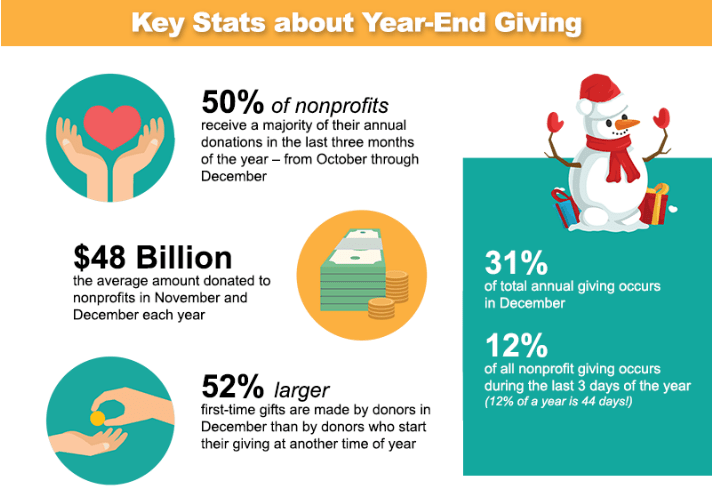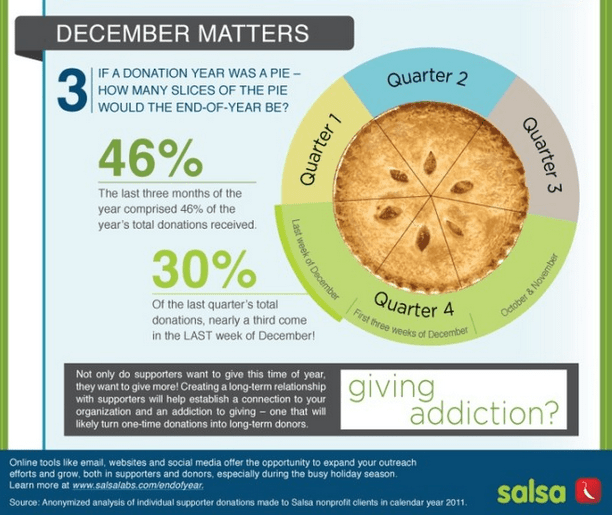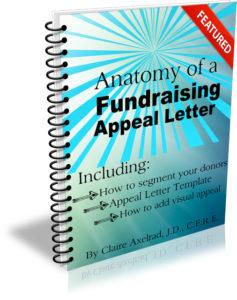 Hold the presses! If you haven’t yet sent your year-end fundraising appeal, you’ve time to give your message a once over.
Hold the presses! If you haven’t yet sent your year-end fundraising appeal, you’ve time to give your message a once over.
I’ve got just the checklist you need.
If you’ve already sent your appeal off to the printer, you’ve still time to rethink your copy before sending your December follow-up or preparing your year-end series of emails.
Either way, taking the time to look at your fundraising message with a critical eye can help you raise a lot more money.
You see, there are right and wrong ways to talk with prospective donors. You’ve likely read a lot on this topic (I know I’ve certainly written a lot on this topic – for starters see here), yet it bears repeating. Especially as we enter the most giving time of the year. If you fail to put your best foot forward during the last quarter of the calendar year, you’re going to end up shooting yourself in that foot!
Many charities will raise a huge percentage of their annual fundraising goal during the next three months. There’s plenty of data out there to support this. Just check the infographics below.

Courtesy of Winspire

Courtesy of Salsa
Let’s make sure you don’t blow your chances and get your full share of the philanthropy pie.
Do This, Not That
As you read through this list the “to do” part of the equation may sound completely logical at first blush. You may think “of course we do this!”
Good for you. That means you’re thinking correctly. But… sometimes good intentions get lost in translation during the execution phase. So I encourage you to consider the “do not do” part of the equation as well. Then double check your work. Why? Because this stuff is tricky.
1. Talk to your donors, not at them.
This is the difference between donor-centric and ego-centric writing. Alas, it’s all too easy to fall into the ego-centric trap. You are proud of what you’re doing and you want to tell folks. You know what you want to say. So, why not? I’ll tell you why not.
There’s a big difference between what you want to say and what donors want to know. You may want to tell them all the details of your programs and processes. Donors don’t want to hear those details. They don’t have time for them. They simply want to hear a simple, interesting, relevant story that emotionally draws them into your work.
Signs you’re speaking AT donors:
- “I want to tell you about…”
- “Did you know that we…”
- “We have a huge fundraising goal to meet…”
Signs you’re speaking TO donors, engaging them as partners who understand and can relate to your work, and not just as bystanders [These are real examples I’ve collected]:
- “Can you imagine a world without auto mechanics, dry cleaners, or your favorite restaurant on the corner?” This begins with “you” and asks the donor to enter into the story, through their own imagination.
- “No one should go hungry this Thanksgiving. We’re asking you to serve thousands of Thanksgiving meals to the hungry and homeless.” This begins by evoking a basic human need (food) and fear (hunger), drawing the reader in to a scenario they may not have lived but can certainly imagine. It also immediately asks the donor to be a partner in the effort to prevent something bad from happening.
- “There is absolutely nothing worse than watching your 3-year-old child die.” This draws the reader in immediately, and is relevant to anyone who has ever had children.
2. Ask donors to change the world, not to help you change the world.
Give your donors agency. They want to do something, not simply cheer on your efforts. Of course, some folks will be happy to help you. That’s why even bad fundraising letters bring in gifts. But, they also leave a lot of money on the table. You’ll receive more gifts, and more passionate ones, when you empower donors to accomplish something that feels powerfully, and personally, meaningful.
Signs you’re treating donors as bystanders or assistants:
- “Please help us meet this challenge grant…”
- “Please help us continue our important work…”
- “Will you help us to sustain and expand our efforts…”
Signs you’re empowering donors to be the change they want to see in the world [These are from the same real examples I shared above]:
- “Your gift creates jobs and changes a life story.” The donor is told the powerful impact of their gift, today and tomorrow.
- “Every $6 you give will provide a hot Thanksgiving meal for men, women and children who are struggling to get through these hard times.” This is a specific solution and the donor can visualize the happy outcome.
- “Please, while you have my letter in your hand, fill out your reply form and mail it back with your gift. By doing so, you fulfill a very ill child’s dream.” This corrects the donor directly with the beneficiary their gift will support. It’s not couched in the language of helping the organization do this work.
3. Show what the donor’s gift will accomplish in the future, not what others’ gifts (or even theirs) accomplished in the past.
When you focus on past accomplishments it comes across as fait accomplit. In other words, it appears you no longer need much help. You’ve got it covered. If you want to talk about past accomplishments, put this in your newsletter and thank you letter. In your appeal, focus on the problem at hand, the solution that’s needed, and where the donor comes into the story.
Signs you’re focusing too much on what was done, not on what can be done:
- “Last year our organization delivered…”
- “In the past, people like you have made it possible to…”
- “Every year people are saved because you care…”
Signs you’re highlighting work that lies ahead:
- “You can help entrepreneurs, like Annie, access the money and advice they need to grow their business, create jobs, and ensure the vitality of our local small business community.” This is a slight shift from talking about how Annie was helped by last year’s donors, focusing on people like her who you can help moving forward.
- “Can we count on you this year?” This is preceded by language about honoring their pledge that no one should be hungry or alone on Thanksgiving. It’s not enough they did this in the past. They need the donor to assure the pledge continues to be fulfilled.
- “I’m hoping today that you’ll join me and help other children that are very ill.” This letter does tell one parent’s story of their child who was very ill; then miraculously recovered (she believes it to be because she wanted to see her wish come true). So that part of the letter is about the past, but it’s written in a way you can envision the same child’s bright future. The story isn’t at an end, it’s just beginning.
4. Give a reason to give now, as opposed to whenever for whatever.
Does your appeal create some sense of urgency? An appeal that boils down to “we need money… we always need money… please give us some” is not very compelling. Yet that’s the way too many fundraising letters come across. Make sure you describe a specific need. Ideally make it quantifiable. If you need $30,000 to shelter six homeless families, I can visualize what will happen if I don’t give right away, and I have a sense of how much my gift will accomplish.
Signs your appeal lacks urgency:
- “Your gift, of any amount, will help.”
- “We hope you will renew your annual support.”
- “Your support will enable us to reach out to more families.”
Signs you’re giving people a good reason to give immediately, to achieve a specific outcome:
- “Your gift will be doubled.” Help meet the $10,000 matching challenge.” Challenge grants are a tried-and-true way to create urgency. Most people like to leverage their investment; this serves as an impetus to give while this offer is still in place. It also channels “FOMO” – fear of missing out.
- “When you make sure there is enough turkey and mashed potatoes to go around, you are also helping to provide…” Urgency here is provided by the date-specific nature of the appeal. The turkey and mashed potatoes you provide today will also help those who are served receive other benefits enumerated in the letter.
- “You may even bring a child back from heaven.” There’s nothing more urgent than stopping the arrival of the grim reaper.
Bottom Line
Put your donor into your nonprofit’s story.
Show them how to be central characters in fulfilling your shared vision, mission and values. If you own the mission alone, and ask them merely to be supporting characters, you won’t engage their passions.
The best fundraising messages are about (1) Problem, (2) Solution, (3) How the donor can help.
That’s it. Anything else gets in the way.
NOTE: You may wish to check out the full “Make a Wish” letter (my third example) on the SOFII blog. It’s written by direct mail wizard Harvey McKinnon. The other letters are in my personal ‘swipe file’ – do you have one? – and are from Opportunity Fund and Glide. If you do nothing else after reading this article, begin collecting appeals you love (preferably ones that persuade you to donate) and appeals you wouldn’t want to be caught dead writing. I find it helps get my juices flowing whenever I set down to write a fundraising appeal.
Want More Help with Your Fundraising Appeal?
 Could your appeal use a shot in the arm? Grab my Anatomy of a Fundraising Appeal Letter + Sample Template. This is a simple, yet incredibly thorough, 62-page step-by-step guide to crafting a killer appeal letter or email appeal. Because writing a compelling fundraising letter can be tricky. It’s not rocket science. It’s just something most of us are not taught. You can easily learn how to to this — and that’s where this nifty guide comes in! How much more money could you raise with your appeal letter if it spoke straight to the heart – and to your donor’s passions?
Could your appeal use a shot in the arm? Grab my Anatomy of a Fundraising Appeal Letter + Sample Template. This is a simple, yet incredibly thorough, 62-page step-by-step guide to crafting a killer appeal letter or email appeal. Because writing a compelling fundraising letter can be tricky. It’s not rocket science. It’s just something most of us are not taught. You can easily learn how to to this — and that’s where this nifty guide comes in! How much more money could you raise with your appeal letter if it spoke straight to the heart – and to your donor’s passions?
As with all Clairification products, if you’re not happy for any reason you have my 30-day, no-questions-asked, 100% refund guarantee.





